 HBO Max, a streaming service that is still in its infancy, made waves recently when they announced that they were temporarily pulling Gone with the Wind, the 1939 film based on Margaret Mitchell’s novel. The HBO statement reads, “These racist depictions were wrong then and are wrong today, and we felt that to keep this title up without an explanation and a denouncement of those depictions would be irresponsible.” It has since been announced that the film will be reposted with a new introduction by Jacqueline Stewart, Black scholar and TCM host. It took little time for the initial announcement to be met with backlash, particularly the statement that the film is “a product of its time” (a phrase admittedly used in the HBO statement).
HBO Max, a streaming service that is still in its infancy, made waves recently when they announced that they were temporarily pulling Gone with the Wind, the 1939 film based on Margaret Mitchell’s novel. The HBO statement reads, “These racist depictions were wrong then and are wrong today, and we felt that to keep this title up without an explanation and a denouncement of those depictions would be irresponsible.” It has since been announced that the film will be reposted with a new introduction by Jacqueline Stewart, Black scholar and TCM host. It took little time for the initial announcement to be met with backlash, particularly the statement that the film is “a product of its time” (a phrase admittedly used in the HBO statement).
Let’s take a look at that time itself.
1939
It would be foolhardy to deny that Gone with the Wind is a historically significant film. Following its December 1939 release, it pulled 10 Academy Awards from 13 nominations, including, as some of its defenders point out, the first to go to a Black woman, Hattie McDaniel. She also, it should be noted, was seated separately from the rest of the cast and was not allowed to attend the film’s premiere as a Black woman.
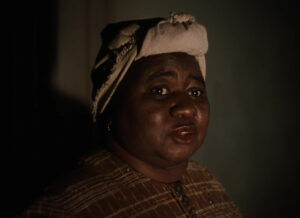 This is a tragically apropos extension of the film itself. While one could describe the film as a tragic romance taking place in the south, that escapes the issue. Black people in the film are repeatedly portrayed as happy, subservient slaves, unintelligent and lost without their gracious masters. This is sometimes called the “happy darkie” myth. Northerners are aggressors in the film, even opportunistic highwaymen, who only want to steal away the southerners’ slaves for votes. The film might be about a romance, but one can hardly watch the film without concluding that the south was the right side of the civil war, and Black people are not worthy of freedom.
This is a tragically apropos extension of the film itself. While one could describe the film as a tragic romance taking place in the south, that escapes the issue. Black people in the film are repeatedly portrayed as happy, subservient slaves, unintelligent and lost without their gracious masters. This is sometimes called the “happy darkie” myth. Northerners are aggressors in the film, even opportunistic highwaymen, who only want to steal away the southerners’ slaves for votes. The film might be about a romance, but one can hardly watch the film without concluding that the south was the right side of the civil war, and Black people are not worthy of freedom.
To understand just how offensive and regressive this is, we need to take a step back for historical context. Not just for the film, but for the time period that it portrays. Because at the heart of the “accept it as a product of its time” argument is an assumption: “this was before we knew better.” This assumption is false.
1830
 “You’ve got it wrong, Logan, the Civil War was in the 1860’s!” How right you are. But the abolition movement is not contained to the Civil War and the Emancipation Proclamation. In fact, the relevant portion here starts decades before, with a group of young abolitionists from the Lane Theological Seminary. They were abolitionists when the term was a vicious slur, even in the north. Abolitionists were attacked physically in all states because of the radical view of immediatism – that slavery should be immediately abolished and not gradually chipped away at over the decades. But perhaps most surprising is that they didn’t stop there, but opposed what we would come to call racism. In his book Arguing About Slavery, William Lee Miller says:
“You’ve got it wrong, Logan, the Civil War was in the 1860’s!” How right you are. But the abolition movement is not contained to the Civil War and the Emancipation Proclamation. In fact, the relevant portion here starts decades before, with a group of young abolitionists from the Lane Theological Seminary. They were abolitionists when the term was a vicious slur, even in the north. Abolitionists were attacked physically in all states because of the radical view of immediatism – that slavery should be immediately abolished and not gradually chipped away at over the decades. But perhaps most surprising is that they didn’t stop there, but opposed what we would come to call racism. In his book Arguing About Slavery, William Lee Miller says:
(The Lane Seminary abolitists called for) not only ‘immediate emancipation of the whole colored race within the United States’…but also the emancipation ‘of the free colored man from the oppression of public sentiment.’
And:
The Lane students after their debate proposed, further, ‘the elevation of [slave and free black] to an intellectual, moral, and political equality with the whites.’
1870
These efforts did not end with the Civil War, either. The end of the war marked an effort at racial integration, one called Reconstruction, a particular priority of President Ulysses S. Grant. Grant pushed hard for its policies, which included dispatching federal troops to prevent intimidation of Black voters (including murders that went curiously uninvestigated by local police, which unfortunately has its modern comparisons). In fact, President Grant entered office during the height of Ku Klux Klan terrorism and authorized military force to strike back against them. Ron Chernow describes this in his book Grant:
In 1870 he oversaw creation of the Justice Department, its first duty to bring thousands of anti-Klan indictments. By 1872 the monster had been slain, although its spirit resurfaced as the nation retreated from Reconstruction’s lofty aims. Grant presided over the Fifteenth Amendment, which gave blacks the right to vote, and landmark civil rights legislation, including the 1875 act outlawing racial discrimination in public accommodations.
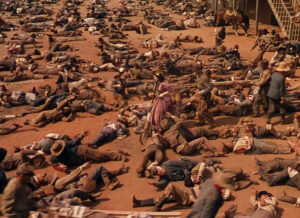 Put simply, Grant and his fellow progressive Republicans sought something kind of like the Civil Rights Movement many years earlier. Unfortunately, the party thereafter dropped Reconstruction as a priority. In 1883, the Supreme Court ruled the Civil Rights Act of 1875 unconstitutional, paving the way for Jim Crow.
Put simply, Grant and his fellow progressive Republicans sought something kind of like the Civil Rights Movement many years earlier. Unfortunately, the party thereafter dropped Reconstruction as a priority. In 1883, the Supreme Court ruled the Civil Rights Act of 1875 unconstitutional, paving the way for Jim Crow.
1920
Fifty years later, in the 1920s, a new iteration of the Ku Klux Klan arose. Margaret Mitchell began writing her novel in 1926. The KKK itself appears in the novel, conducting a raid in retaliation when Scarlett is attacked (the implication is that her attackers, one of them Black, would have raped her had they gotten the chance). In the film, the Klan raid is changed to a “political meeting.”
Analyzing the intent of Mitchell herself is admittedly complicated. The novel itself is sometimes considered part of “Anti-Tom Literature,” written in response to Harriet Beecher Stowe’s classic anti-slavery book Uncle Tom’s Cabin. This is reported in the 2007 book Memory and Myth: The Civil War in Fiction and Film from Uncle Tom’s Cabin to Cold Mountain:
She (Mitchell) claimed that Uncle Tom’s Cabin was irrelevant to her writing of Gone with the Wind, but linked the two books together in a letter written two years after her novel was published. ‘It makes me very happy to know that ‘Gone with the Wind’ is helping refute the impression of the South which people abroad gained from Mrs. Stowe’s book.’”
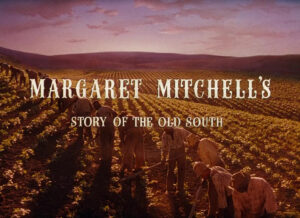 The film was released three years after the novel’s publication.
The film was released three years after the novel’s publication.
At the same time, she was also baffled that the book was deemed offensive on racial grounds, thinking it to be apolitical. She even denied that it was indulging in “false dreams of the splendor of the past.” But while it is clear that Mitchell did not have the same intent as D.W. Griffith did with Birth of a Nation, it still faced criticism for its racism. Carlton Moss, a Black dramatist, said that while Birth of a Nation was a frontal attack on people of color, Gone with the Wind was a “rear attack on the same.”
2020
So what, you might ask? Why is all of this important for a discussion of alleged censorship of a classic film? Don’t a lot of films from decades past have racist ideas that were part of the culture? Yes, you’re correct, they do. But the important question here is what ideas were in circulation, and had been in circulation, at the time. The popular conception is that America had never even considered racial equality prior to 1860, but only abolition, then inched forward in a slow but steady line until the 1960’s.
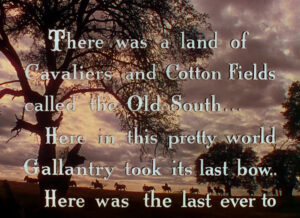 But this conception is not true. Progress was not the inching forward of a tortoise toward the finishing line of progress. Rather, it has been a game of tug of war, in which many advocates have made their voice heard for equality, even before the civil war. Americans tried to create a civil rights movement as early as the 1830’s, and with some success up to the 1880’s, until those in power quashed it. Gone with the Wind is not a passive production of such a game, but pulled as an active participant. And we can say this because we have verification that ideas pushing forward to racial equality were available at the time, and well before.
But this conception is not true. Progress was not the inching forward of a tortoise toward the finishing line of progress. Rather, it has been a game of tug of war, in which many advocates have made their voice heard for equality, even before the civil war. Americans tried to create a civil rights movement as early as the 1830’s, and with some success up to the 1880’s, until those in power quashed it. Gone with the Wind is not a passive production of such a game, but pulled as an active participant. And we can say this because we have verification that ideas pushing forward to racial equality were available at the time, and well before.
But my plea is not to ban the film so that it is never seen again. I’m sympathetic to this op-ed by Jeff Yang, which says:
…removing (abhorrent works) from view actually makes it harder to contend with them. It allows creators, companies and audiences to comfortably pretend they never existed, and to move frictionlessly onward without engaging in real structural change in the present.
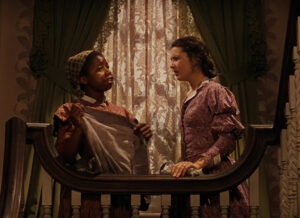 Rather, my plea is simply this: do not shrug off the racism of Gone with the Wind. It is not a mere product of its time, but had a hand in producing its time. This is not to say that it is not a well-produced film. The tragic romance unmasks the selfishness of Scarlett, exposes the consequences of her behavior, and features some really excellent acting and cinematography. Film majors should certainly study it, and it is no doubt a significant film. But at the same time, the film’s racism cannot be defended as a mere passive result of imperfect moral development. We should hold both of these things in tension. A film can be extremely well-made while also propagating harmful ideologies.
Rather, my plea is simply this: do not shrug off the racism of Gone with the Wind. It is not a mere product of its time, but had a hand in producing its time. This is not to say that it is not a well-produced film. The tragic romance unmasks the selfishness of Scarlett, exposes the consequences of her behavior, and features some really excellent acting and cinematography. Film majors should certainly study it, and it is no doubt a significant film. But at the same time, the film’s racism cannot be defended as a mere passive result of imperfect moral development. We should hold both of these things in tension. A film can be extremely well-made while also propagating harmful ideologies.


